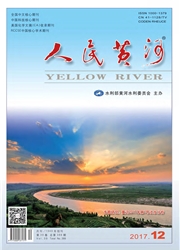

 中文摘要:
中文摘要:
在简述已有研究成果并分析堰塞湖溃决成灾与堰塞体物质组成、结构特征之后,剖析了堰塞湖溃决模型试验的特点、思路、原理与关键环节,论述了堰塞湖溃决模型试验研究的路线.认为模型堰塞体材料除了应在物理、力学性质方面较为稳定外,还必须在坝体渗透性、坍塌突发性、溃决洪流运动性等3 方面同原型相似或相同.在此基础上,归纳了堰塞湖溃决模型的设计与试验方法.要求模型必须遵循水流重力相似、水流阻力相似、水流运动过程相似、沙石起动相似、泥石流运动相似等条件.最后,利用“5·12”汶川地震唐家山堰塞湖的溃决实测资料开展了模型设计与验证试验,结果表明模型能较好地测出洪峰峰值和峰现时间,溃决的下泄流量、溃口宽度随时间的变化过程及下游泥沙堆积状况等方面也同原型较为接近.
 英文摘要:
英文摘要:
In this paper,the existing research results were summarized and evaluated briefly,and the material composition and structural feature of the dammed lake were analyzed. According to the above analysis,the characteristics,process,principle and key steps of dammed lake break physical model were dissected,and the line of work were discussed. Besides of physical and mechanical properties stability,the model material of barrier dam must satisfy the similarities of dam permeability,collapse burstiness and flood movement. Based on these,the physical model design method and experimental method were concluded. The physical model must follow the flow gravity similarity,flow re-sistance similarity,flow motor process similarity,sediment incipient motion similarity and sediment motor process similarity. A physical mod-el of dammed lake was constructed and verificated using the observed data of“5·12”Tangjiashan dammed lake. The results show that the peak flow discharge and peak time can be predicted well from the physical model;the flood flow,the process of breach and downstream sedi-ment deposition predicted from the physical model is close to the measured data.
 同期刊论文项目
同期刊论文项目
 同项目期刊论文
同项目期刊论文
 Finite element analysis of stress intensity facors for surface temperature cracks in a concrete slab
Finite element analysis of stress intensity facors for surface temperature cracks in a concrete slab 期刊信息
期刊信息
